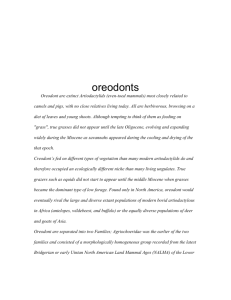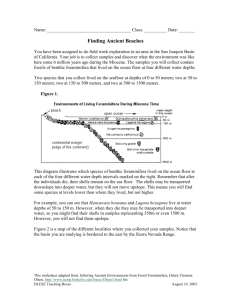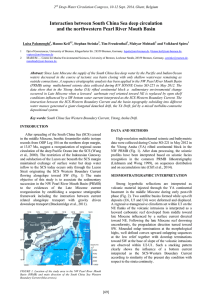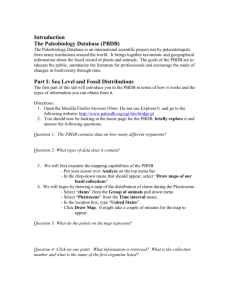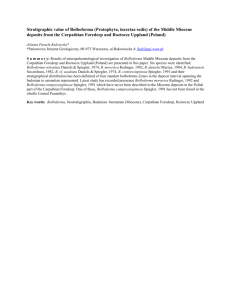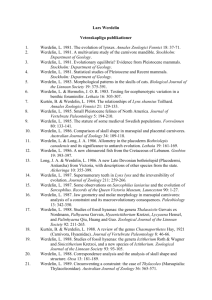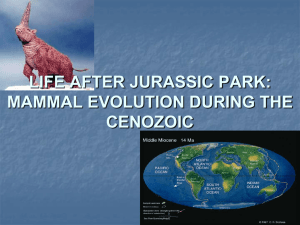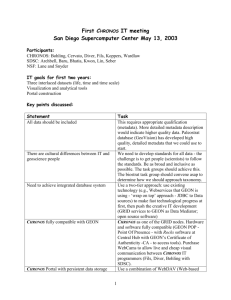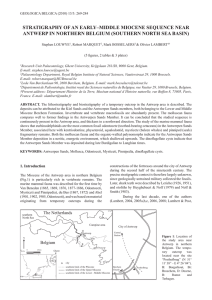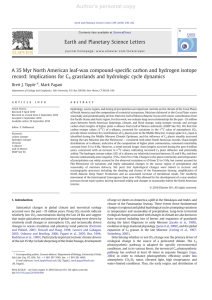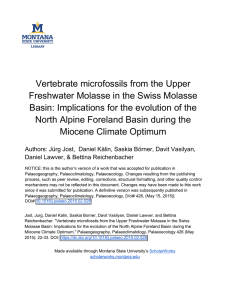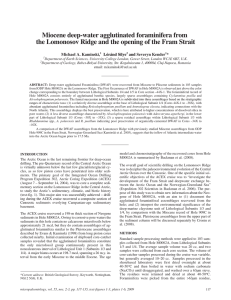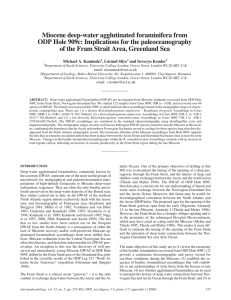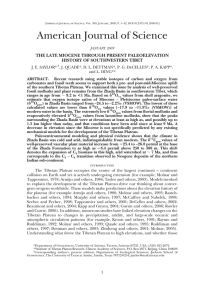Step 1: Develop A Geologic Time Scale for the
advertisement
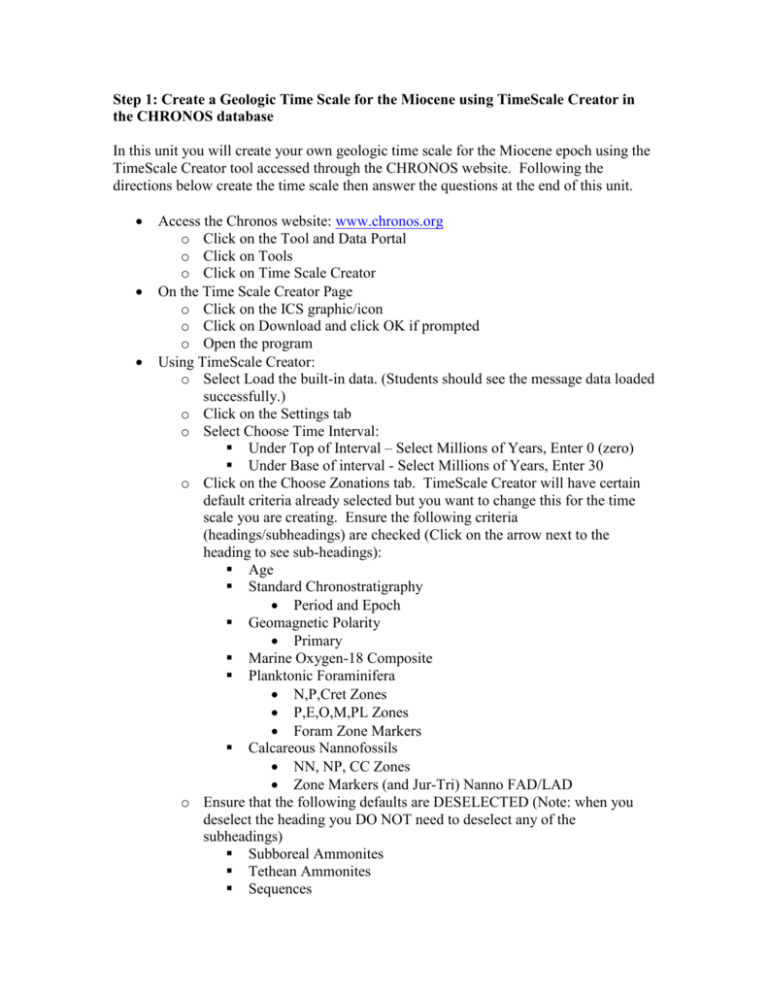
Step 1: Create a Geologic Time Scale for the Miocene using TimeScale Creator in the CHRONOS database In this unit you will create your own geologic time scale for the Miocene epoch using the TimeScale Creator tool accessed through the CHRONOS website. Following the directions below create the time scale then answer the questions at the end of this unit. Access the Chronos website: www.chronos.org o Click on the Tool and Data Portal o Click on Tools o Click on Time Scale Creator On the Time Scale Creator Page o Click on the ICS graphic/icon o Click on Download and click OK if prompted o Open the program Using TimeScale Creator: o Select Load the built-in data. (Students should see the message data loaded successfully.) o Click on the Settings tab o Select Choose Time Interval: Under Top of Interval – Select Millions of Years, Enter 0 (zero) Under Base of interval - Select Millions of Years, Enter 30 o Click on the Choose Zonations tab. TimeScale Creator will have certain default criteria already selected but you want to change this for the time scale you are creating. Ensure the following criteria (headings/subheadings) are checked (Click on the arrow next to the heading to see sub-headings): Age Standard Chronostratigraphy Period and Epoch Geomagnetic Polarity Primary Marine Oxygen-18 Composite Planktonic Foraminifera N,P,Cret Zones P,E,O,M,PL Zones Foram Zone Markers Calcareous Nannofossils NN, NP, CC Zones Zone Markers (and Jur-Tri) Nanno FAD/LAD o Ensure that the following defaults are DESELECTED (Note: when you deselect the heading you DO NOT need to deselect any of the subheadings) Subboreal Ammonites Tethean Ammonites Sequences T-R cyles Major T-R cycles o Select Close (Don’t worry, the criteria you selected will be saved) o Click on Generate (wait patiently for the time scale to be generated) A graphic geologic time scale will appear with your selected criteria. Ensure your time scale represents the criteria above. If not, go back to Settings, Change Zonations, double check your criteria selections and re-generate your timescale Use the time scale to answer the following questions (you can use the zoom in/out buttons to help you see detail). Also, use your internet browser to print the time scale or minimize it on your computer. YOU WILL NEED THIS TIME SCALE FOR STEP 2 OF THE LAB. Questions & Observations: 1. What is the absolute age of the beginning and end of the Miocene epoch? 2. Do the Geomagnetic Polarity C sequences (i.e. the Paleomagnetic record) correlate to any of the microfossil zones? Speculate why this might be important. 3. What is the average duration of the Nannofossil zones over the last 30 myr? 4. Speculate why certain intervals of the Miocene have microfossil zones of longer or shorter duration. 5. What planktonic foraminifera first occurrence (as indicated by an upward arrow on the left side on the foram zone marker column) AND last occurrence (as indicated by a downward arrow on the right side of the column) define the foram biozone M1, the base of the Miocene? 6. What nannofossil last occurrence (fron the Calcareous Nannofossils Zone Marker column) defines the base of the Miocene? 7. What 2 foraminifera first occurrences define the M6 zone? 8. What 2 nannofossil last occurrences fine the NN3 zone? 9. If you had a sample that contained the planktic foraminifer Globoturborotalia nepenthes, what could be the oldest possible age of your sample? 10. What could be the oldest possible age of your sample if it also contained the calcareous nannofossil Discoster berggrenii? 11. Go to the following Wikipedia link on the “oxygen isotope ratio cycle”: http://en.wikipedia.org/wiki/Oxygen_isotope_ratio_cycle. What do oxygen isotopes tell us about climate? (For example, what does it mean when the Oxygen 18 is higher (or positive)? What about when it’s lower (or negative)? 12. Note that on your Time Scale the Oxygen-18 Composite is higher (positive) towards the left and lower (negative) to the right. Identify parts of the Miocene that display evidence for cooling and/or ice sheet growth? Is this cooling rapid or gradual? 13. At what age was the Miocene at it warmest? What foraminifer zone does this warmth correspond with? How long did this warming last? 14. What happened after this warming period? Moving towards the present, at what time did it get this warm again? 15. Do the number of foraminifer first occurrences increase or decrease after this warming? What are some of your ideas on why this might be?

